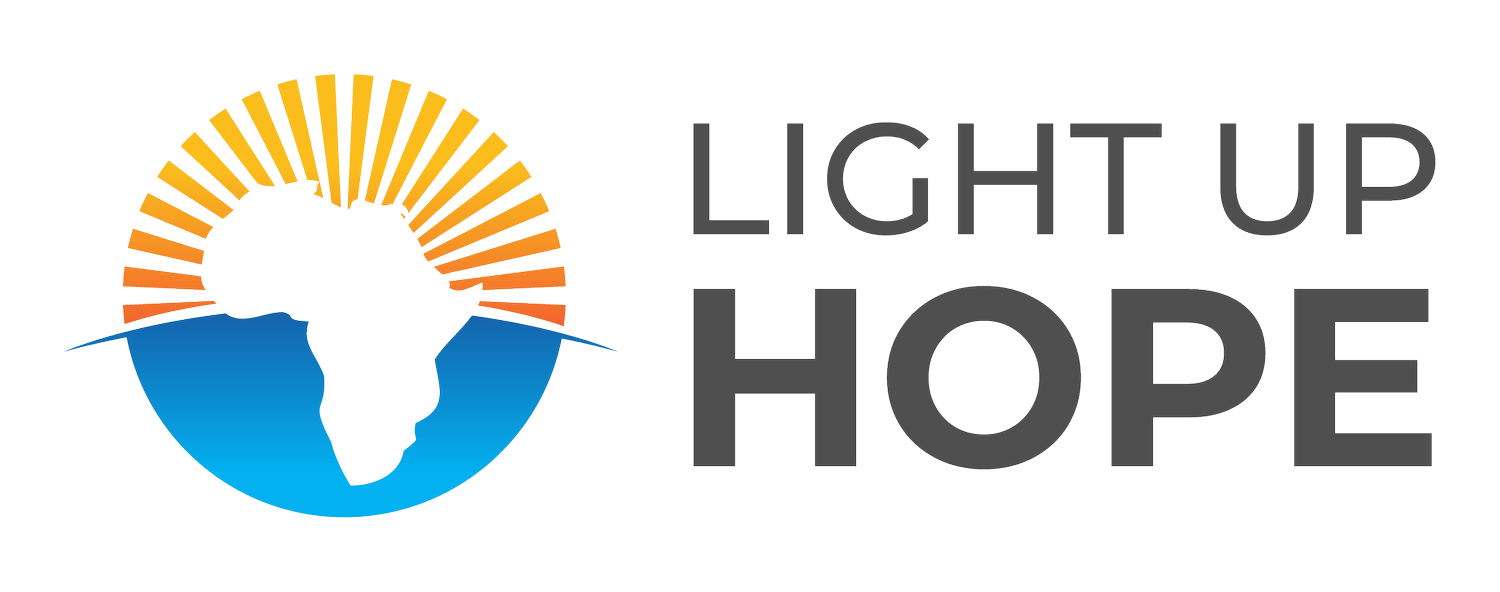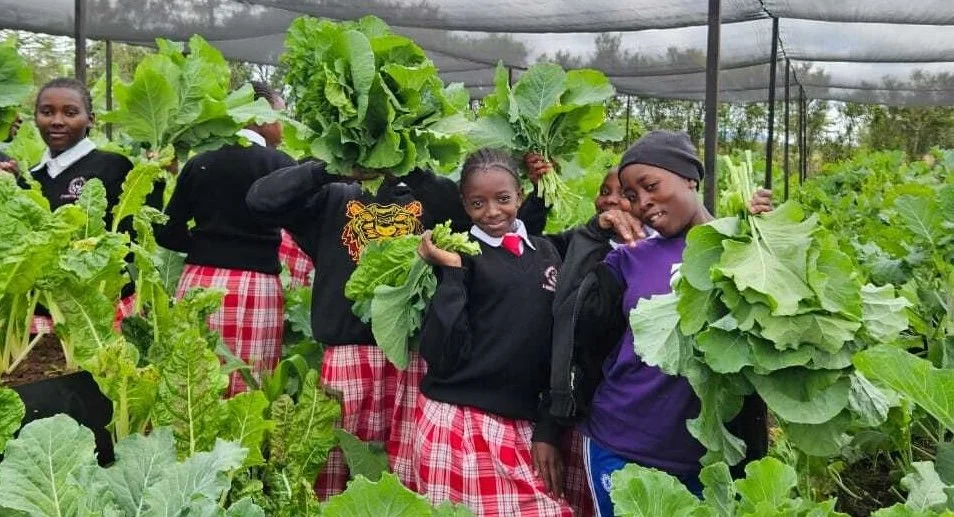Sowing Seeds of Hope in Kajiado’s Drylands
When drought struck Kajiado, a region in southern Kenya, it left behind more than dry fields; it threatened livelihoods and education. Find out how Light Up Hope is helping women and students tackle the crisis through smart farming, vertical gardens, poultry projects, and economic empowerment programs.
Students harvest fresh vegetables from their school garden. (Credit: Light Up Hope)
In the arid landscapes of Kajiado County in southern Kenya, the effects of prolonged drought that lasted from 2020 to 2022 left a trail of devastation, severely impacting the livelihoods of its residents. Parched soils, failed harvests, and dwindling livestock left many families struggling to survive. The impact rippled beyond food insecurity: school attendance dropped, household incomes plummeted, and hope began to fade in communities throughout the region.
But out of this hardship, a quiet revolution has begun. Women, often the backbone of rural households, are leading the charge in transforming how their communities farm, save, and survive. Alongside them, schools have become more than places of learning; they are now centers for sustainable agriculture, teaching students to grow food and take knowledge back home.
At the heart of this transformation is Light Up Hope, which empowers communities with the tools, training, and resources to build resilience. Light Up Hope’s Wezesha Project has advanced work in smart agriculture, women’s empowerment, and education, and these efforts have not gone unnoticed. In fact, Citizen TV, one of Kenya’s leading broadcasting stations, recently featured the initiative, recognizing its remarkable impact on food security, school enrollment, and community development in Kajiado.
From Drought to Determination: Women Lead the Way
Before the drought, most families in Kajiado depended heavily on livestock for their livelihoods. Cattle, goats, and sheep were not just sources of income, they were a symbol of wealth, culture, and survival. But as the drought intensified, water sources dried up and pasturelands withered. Livestock perished in large numbers, leaving families devastated and without a fallback plan.
“This will allow us to earn and invest in other ventures and help each other.”
It was in this moment of crisis that women stepped forward with a new vision. With the support of Light Up Hope, they began to shift away from sole reliance on livestock and embraced alternative, more sustainable methods of food production: poultry farming, vertical gardening, and climate-smart agriculture. These practices offered quicker returns, required less water, and could be managed even on small plots of land.
Together, women in the community formed support groups, attended training sessions, and built backyard chicken coops and gardens. “We came together to keep chickens, especially [egg] layers,” says Joyce Wangeci, a community member and passionate leader.
Today, they are not only feeding their households but also selling eggs, vegetables, and surplus produce, creating new streams of income. The shift marks a powerful transition from depending on fragile systems to building resilient solutions.
Joyce Wangeci proudly shows off two of her chickens. (Credit: Light Up Hope)
Schools at the Center: Growing Knowledge and Nutrition
In the county, schools have become more than just places of academic learning; they’ve evolved into hubs of practical training and community transformation. With the guidance of Light Up Hope, institutions have introduced poultry units, vertical gardens, and tree nurseries that support both student welfare and wider community development.
“The journey of changing the method of livelihoods starts both in school and at home.”
These spaces now double as learning grounds for women’s groups, who meet regularly at the schools to gain hands-on experience in poultry rearing and climate-smart agriculture. At the same time, students are actively involved, applying new skills and replicating the projects at home. This shared model of learning has deepened the link between education and community resilience.
The outcome has been significant. At Olanti Primary School, enrollment grew from 683 to 823 in just three months (a clear sign that families are re-engaging with schools not only as education centers but as places of growth and opportunity).
The initiative’s success even caught national attention, with Citizen TV highlighting the Wezesha Project for its innovative role in empowering women, enhancing school performance, and fostering food security in drought-affected areas.
Students hold fruit tree seedlings provided by Light Up Hope. The seedlings will be planted to promote sustainability and nutrition. (Credit: Light Up Hope)
Empowering Women Economically Through Skills and Savings
Light Up Hope’s Wezesha Project goes beyond agriculture by equipping women with the tools they need to thrive economically and socially. A core part of the initiative involves Village Savings and Loan Associations (VSLAs), which train women to save collectively, access small loans, and invest in income-generating activities. These groups foster a culture of financial independence and shared responsibility, enabling members to support their families and strengthen their communities.
In addition to financial training, women participate in climate change awareness sessions that help them understand how shifting weather patterns affect their livelihoods and how to adapt through sustainable practices. They also attend gender series training, which focuses on building confidence, promoting equality, and ensuring that women and girls have a stronger voice in household and community decision-making.
“We are supporting them so that they can be financially empowered,” said Brian Isalambo, a program officer with Light Up Hope. His words reflect the heart of the project: empowerment through knowledge, collaboration, and action. As a result, many women who once depended entirely on livestock are now diversifying their income through other ventures shaping a future where they are no longer vulnerable, but visionary.
Community members participate in VSLA training provided by Light Up Hope. (Credit: Light Up Hope)
Help Us Turn Drought into Hope
Ready to be part of a real-life success story? Join Light Up Hope in turning drought into opportunity where women lead, students grow, and communities thrive. Plant a seed of change by donating, partnering, or simply spreading the word.




